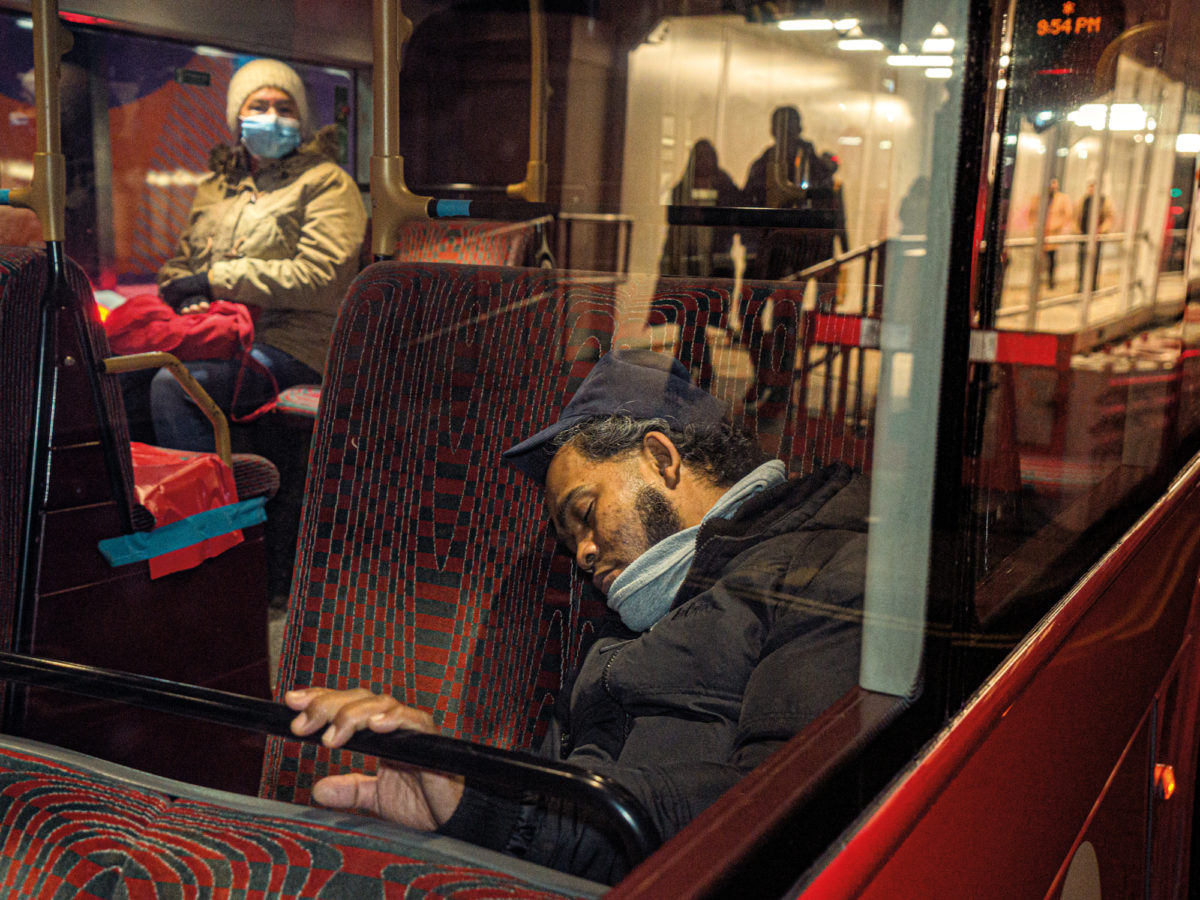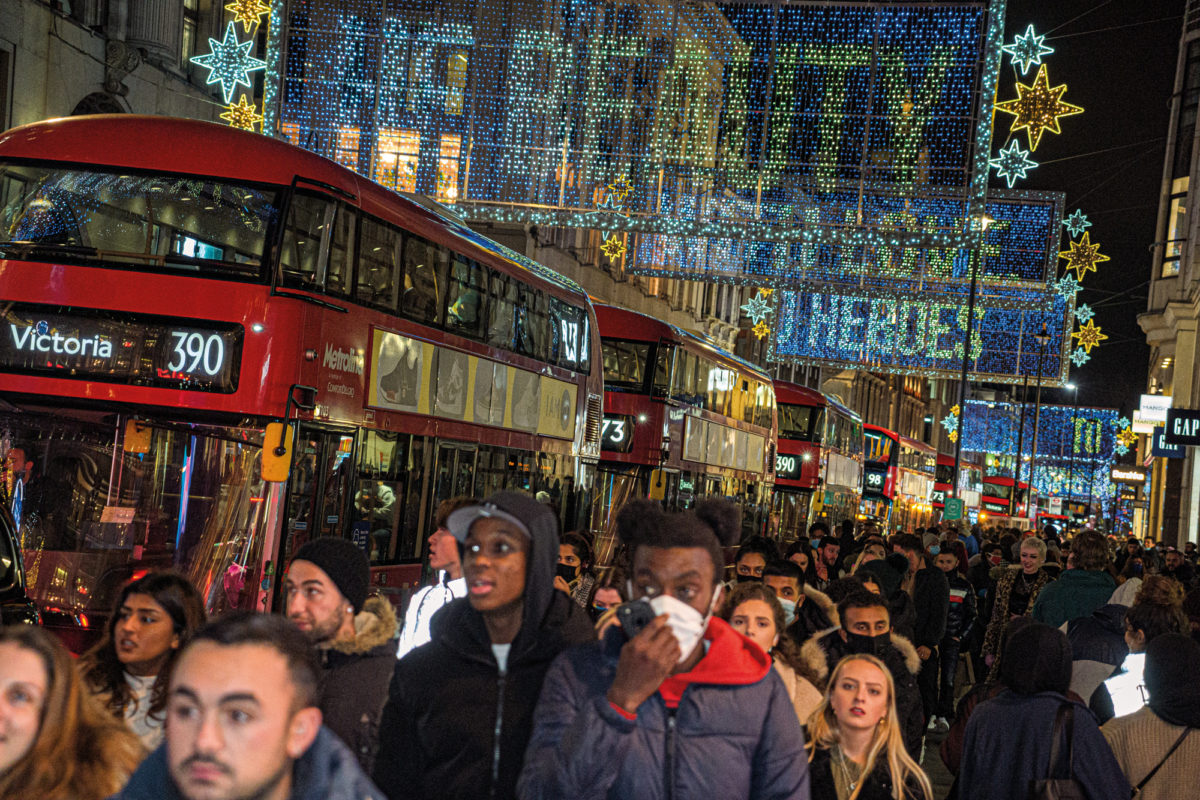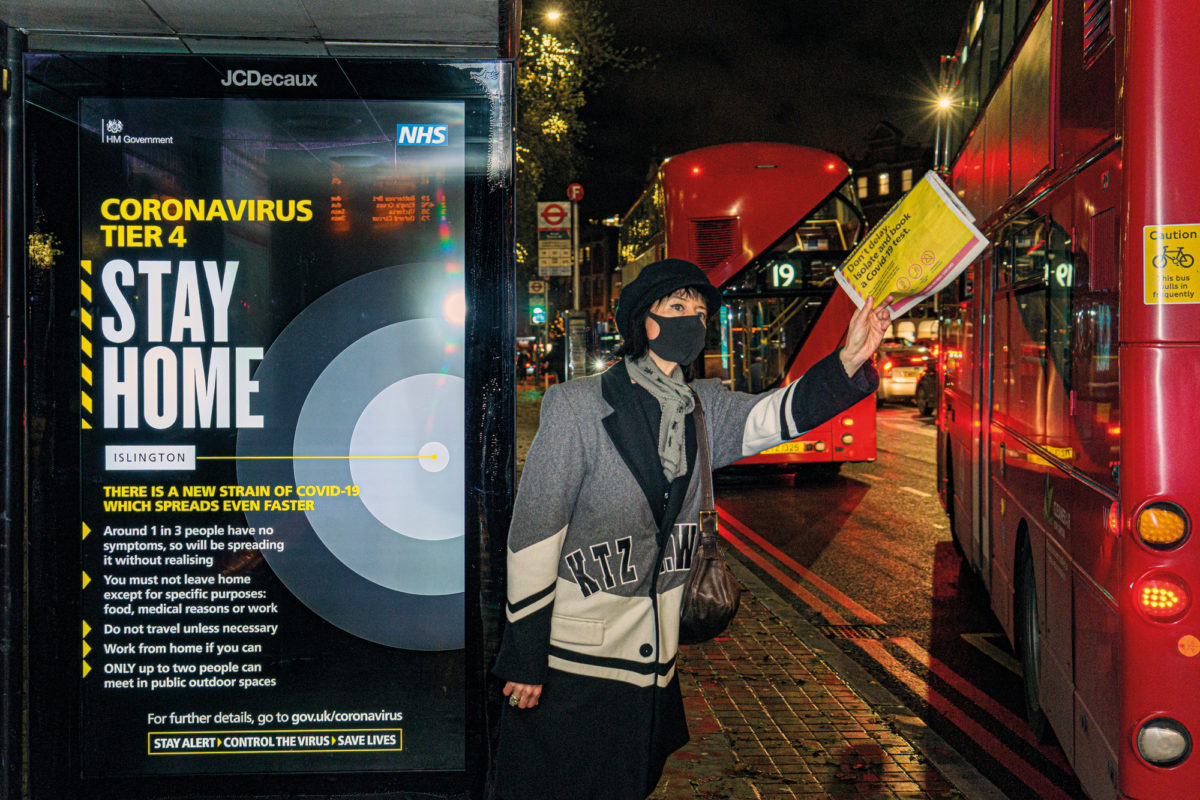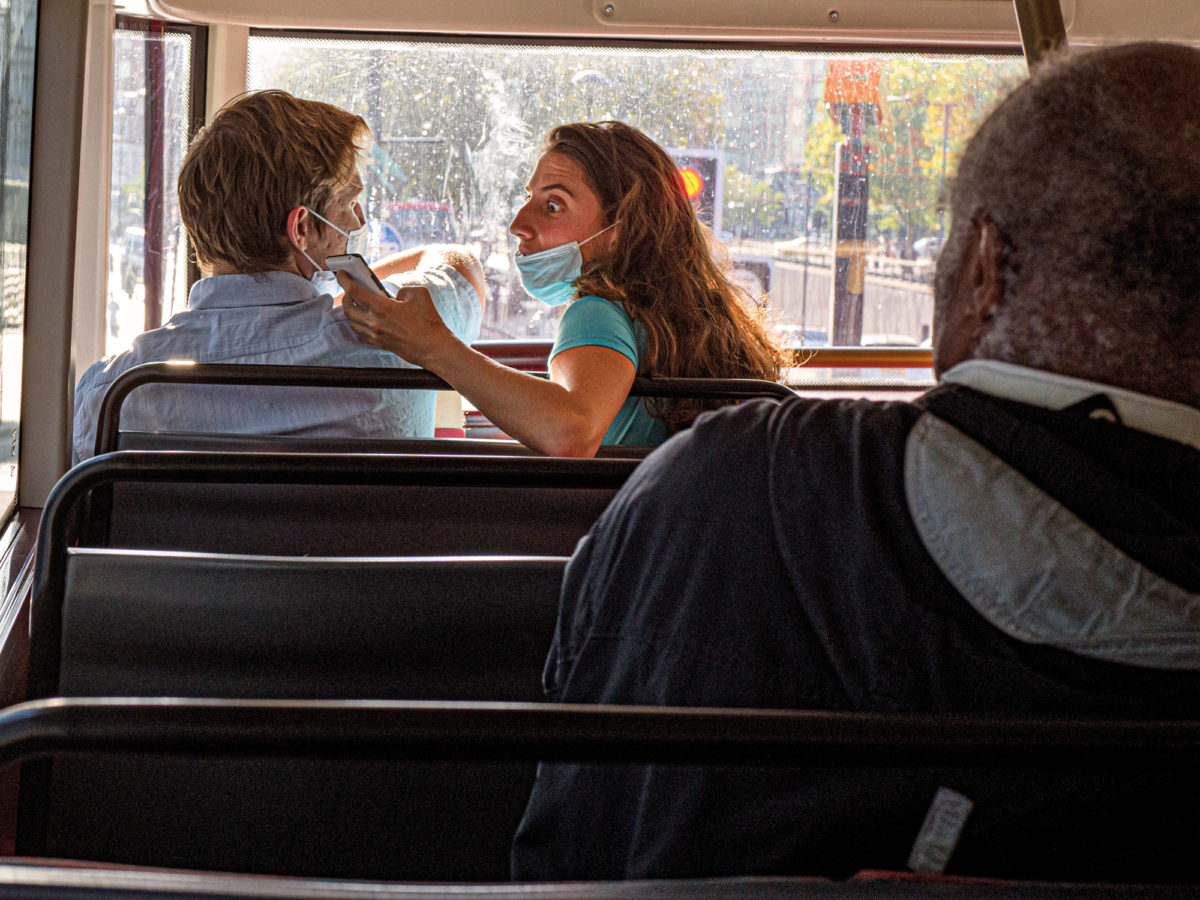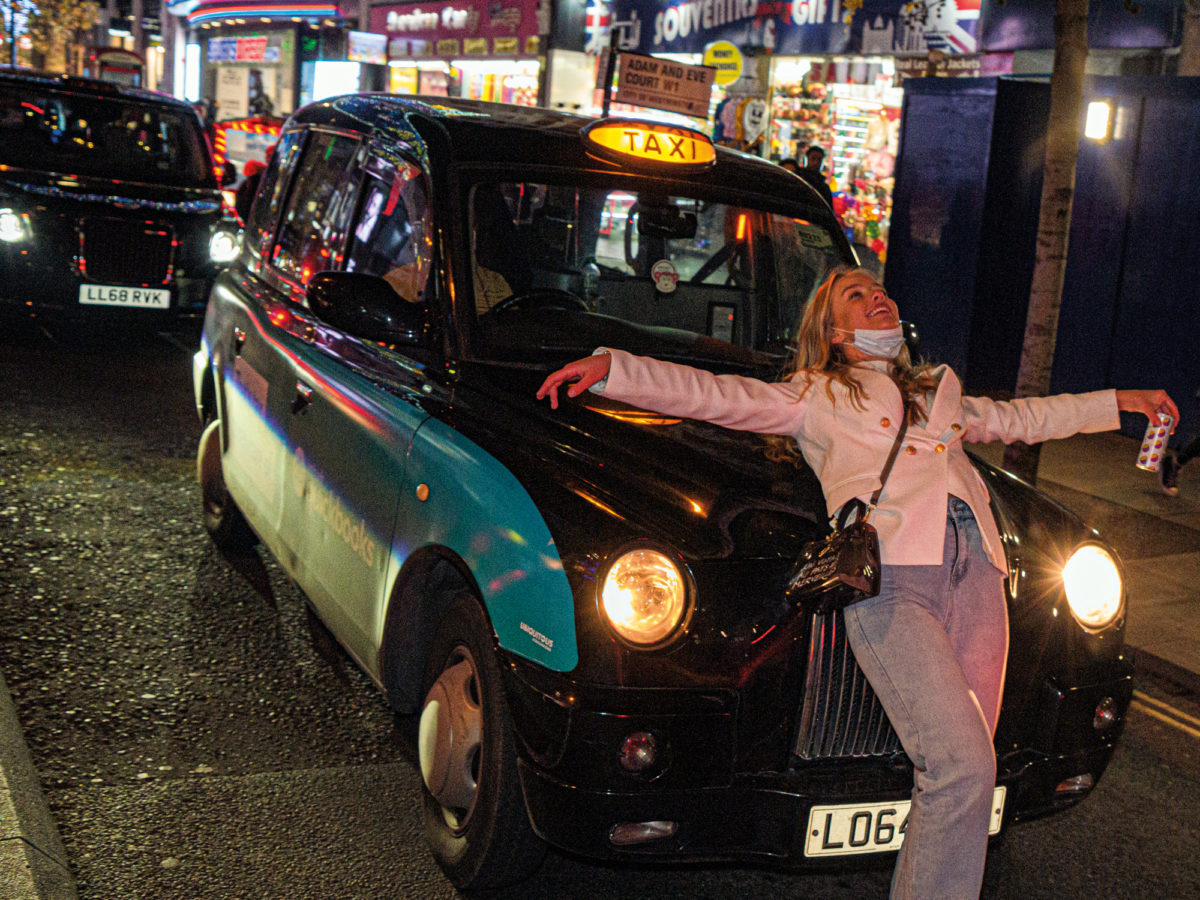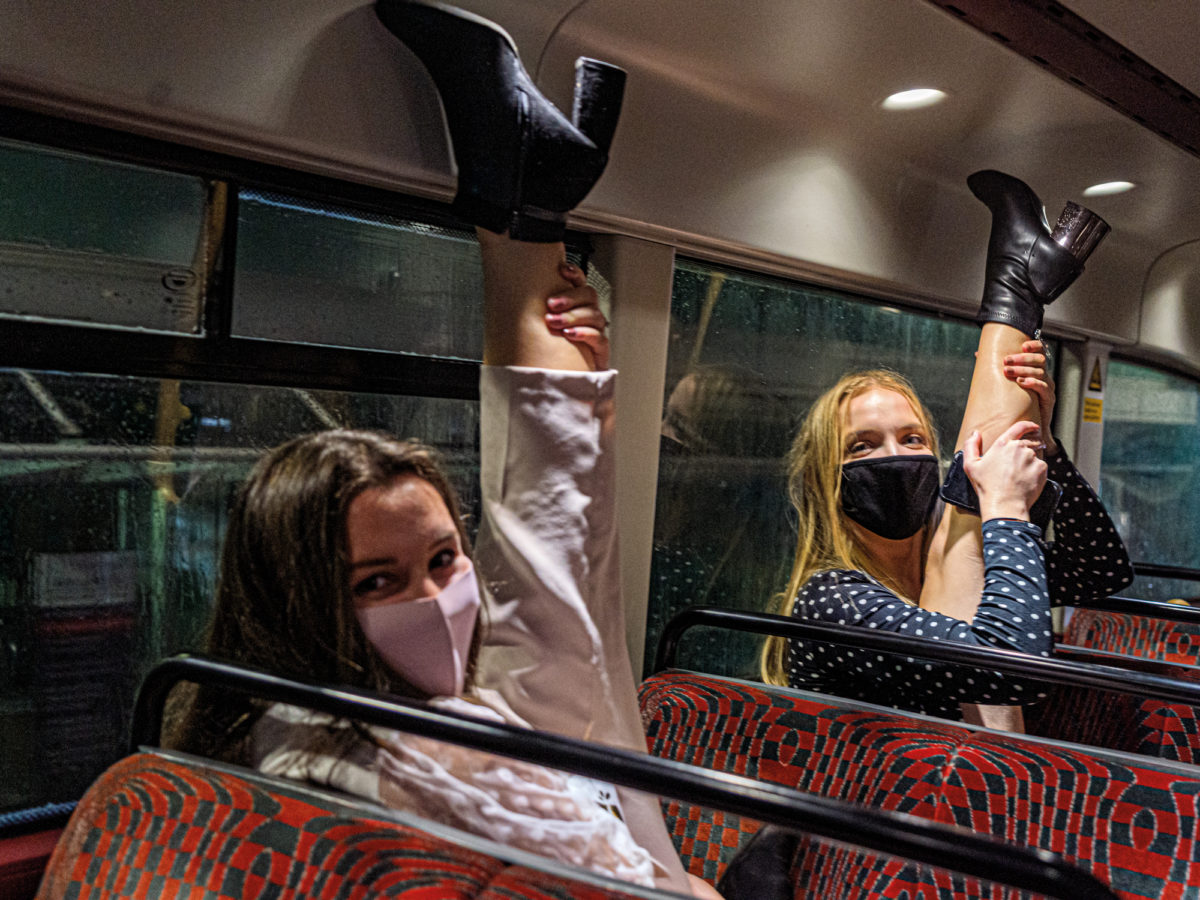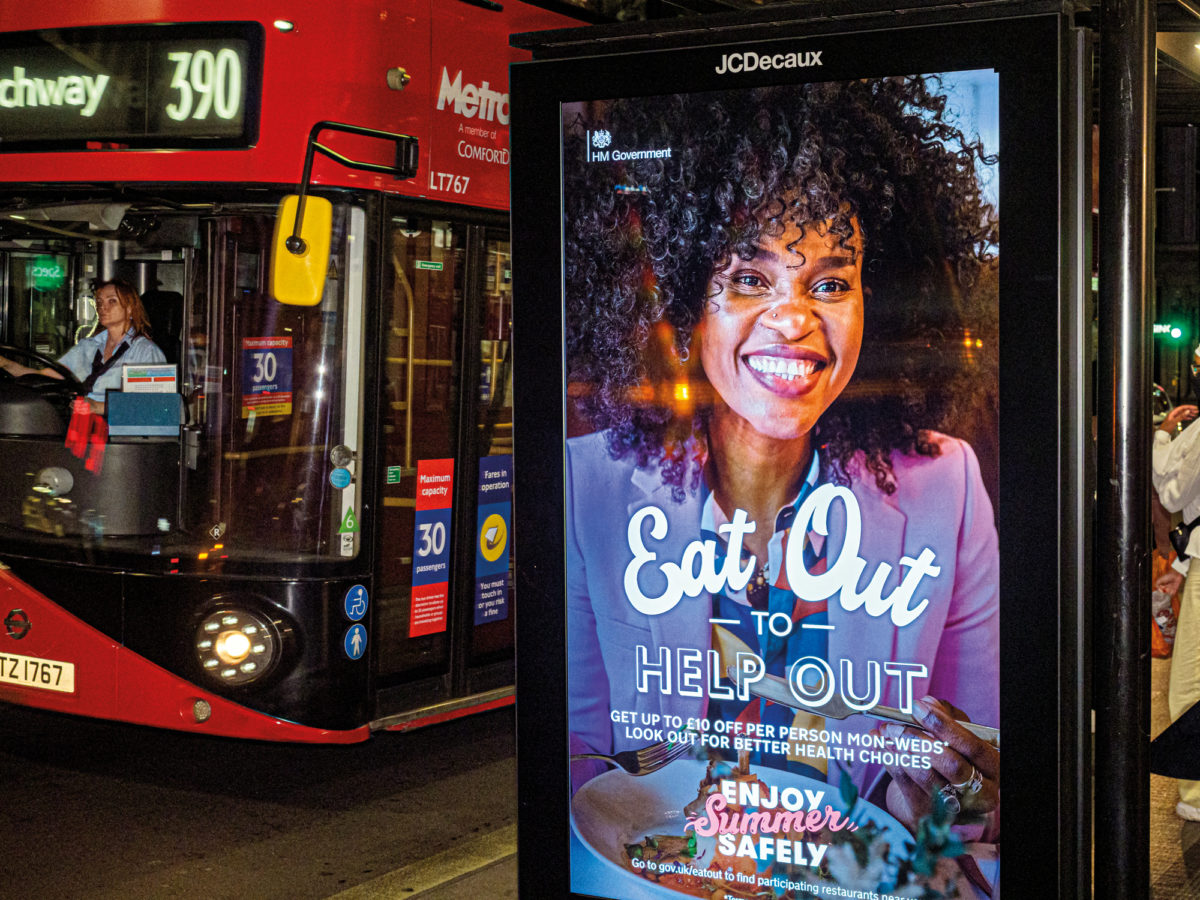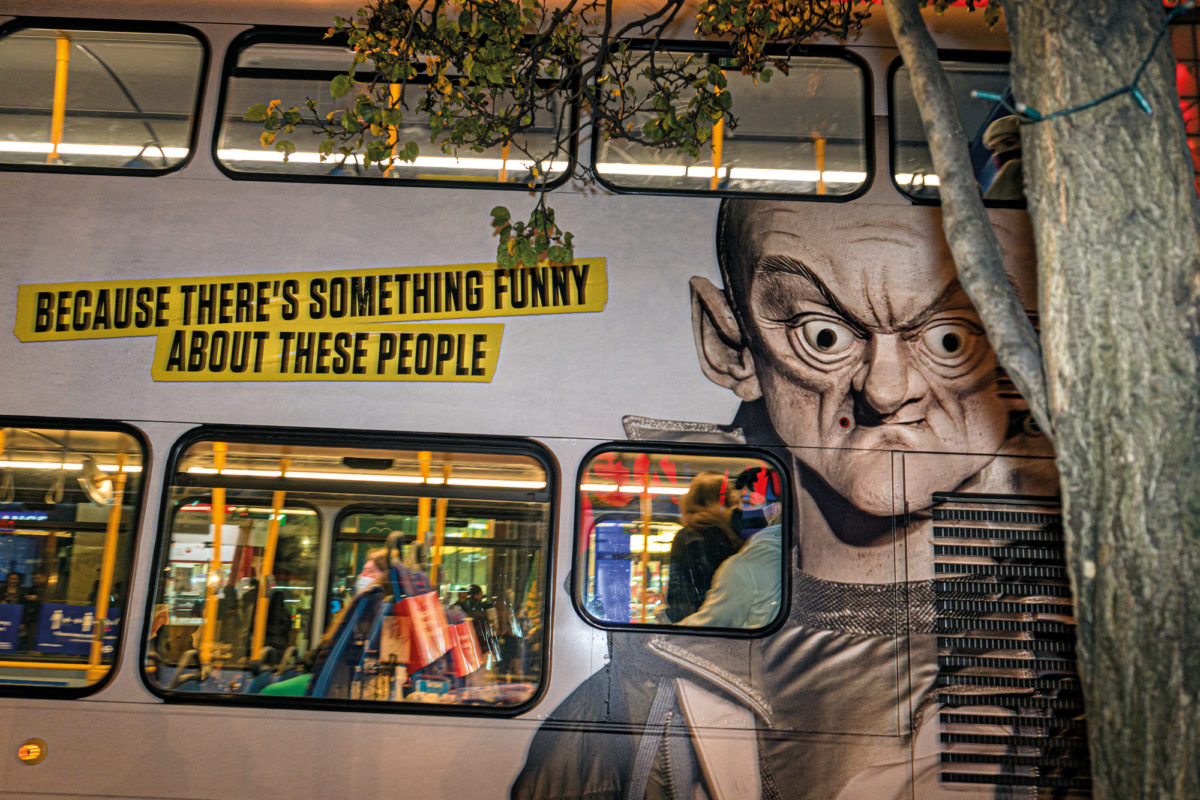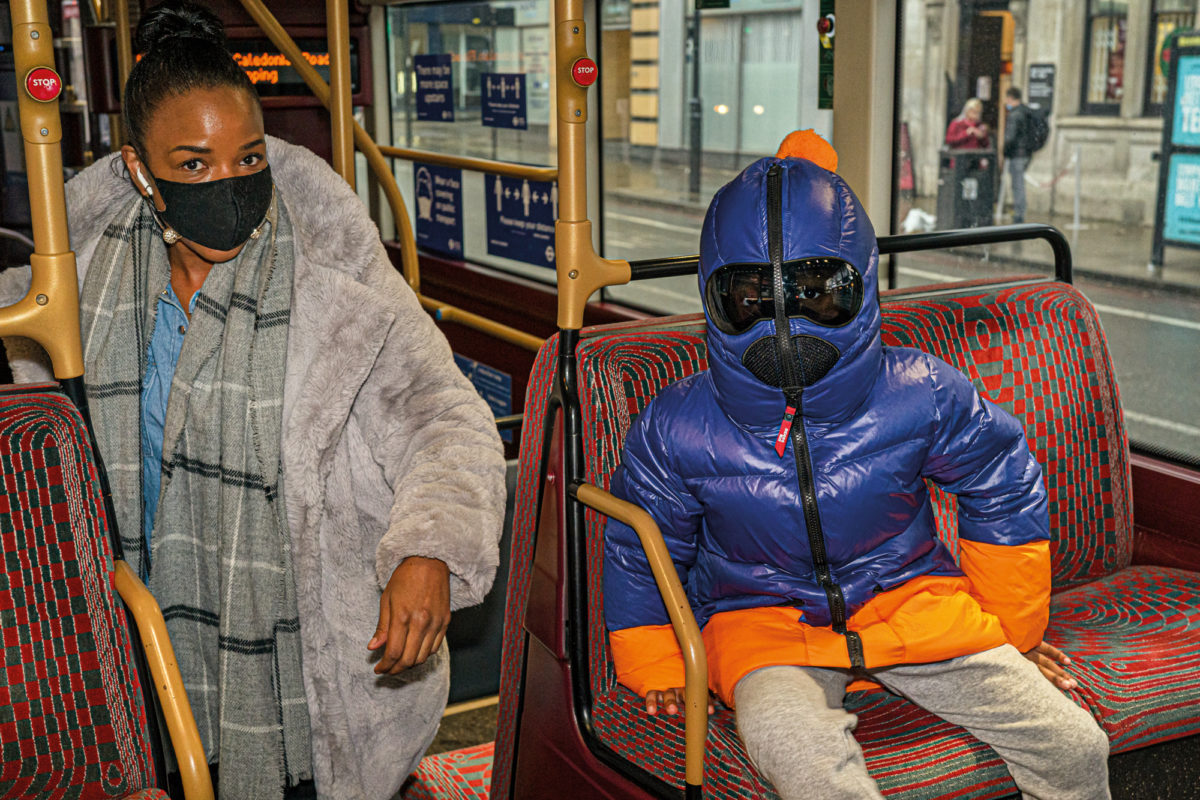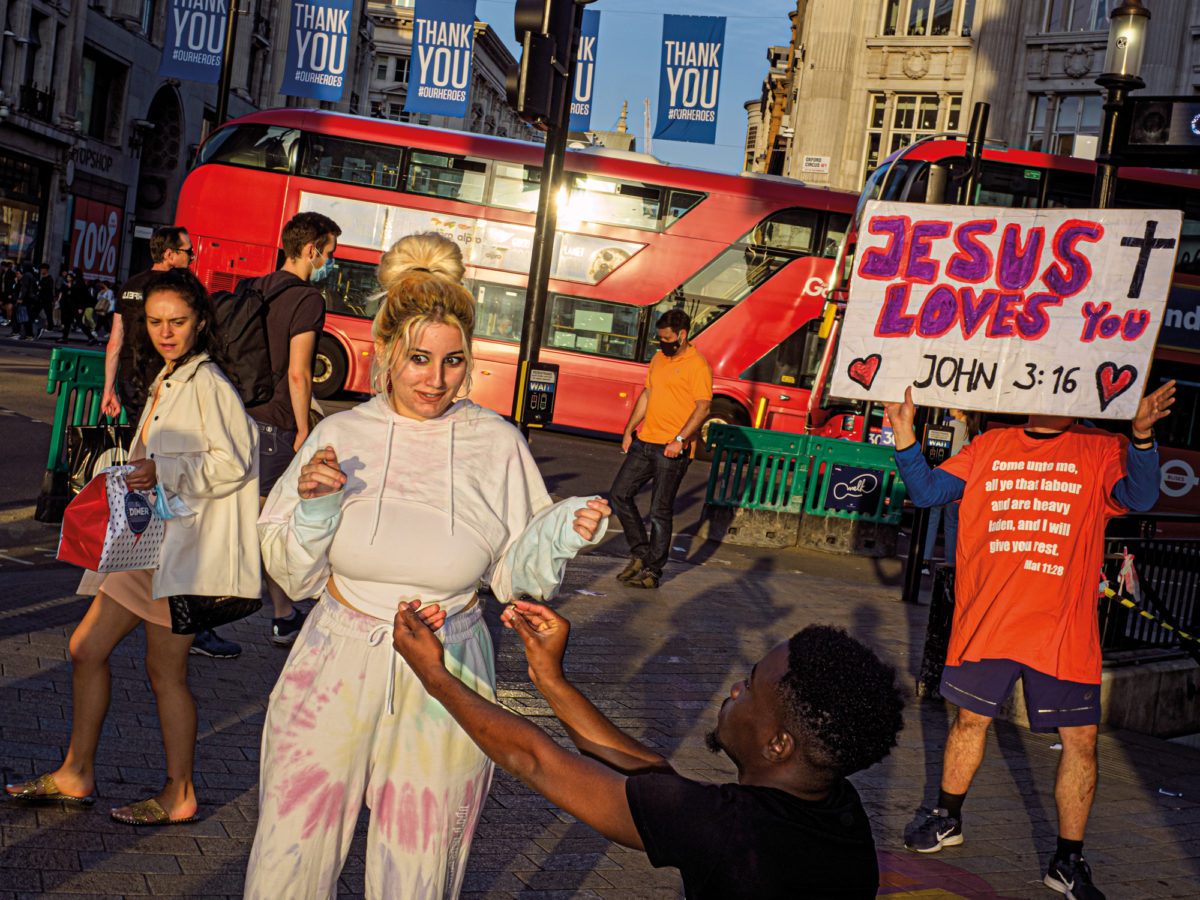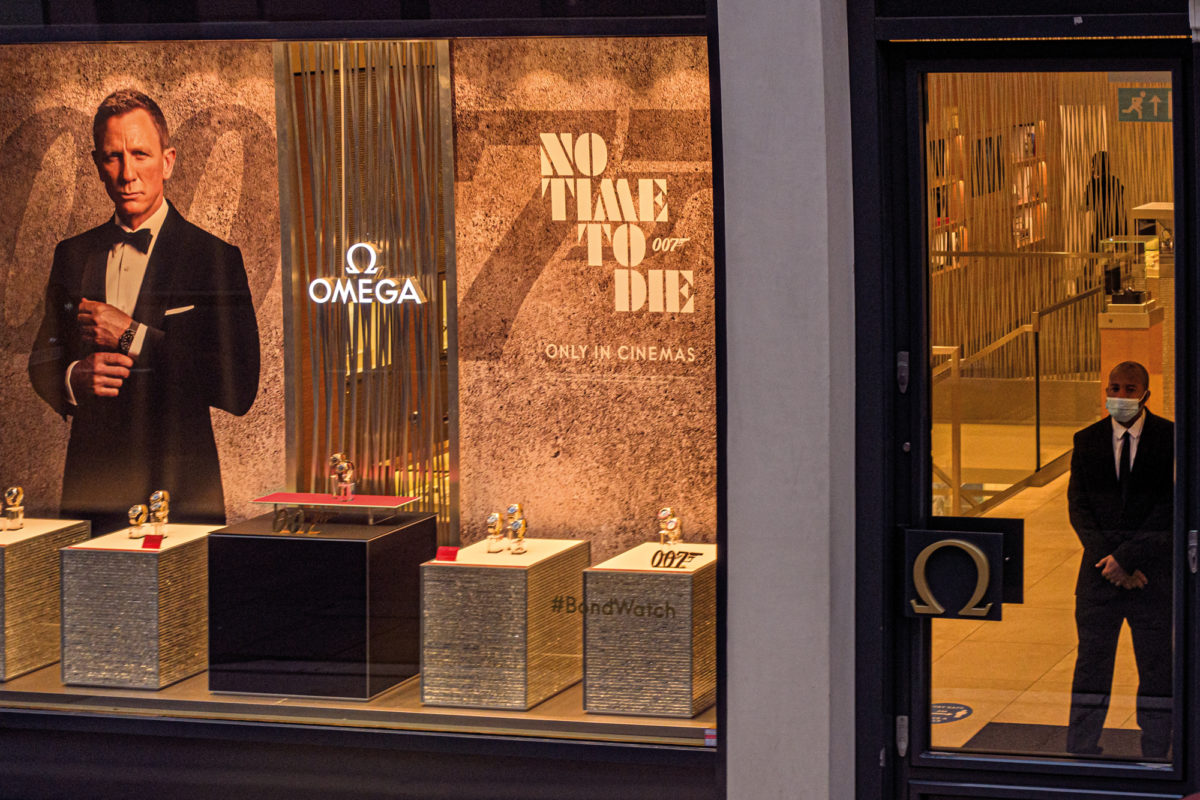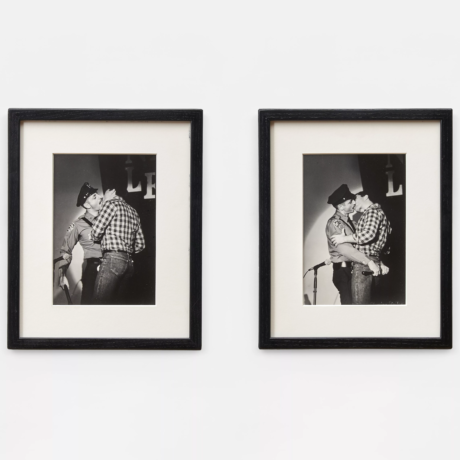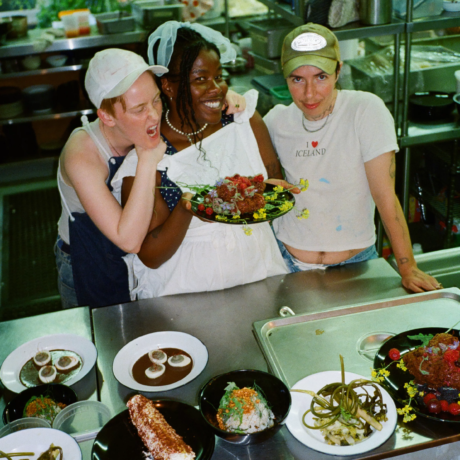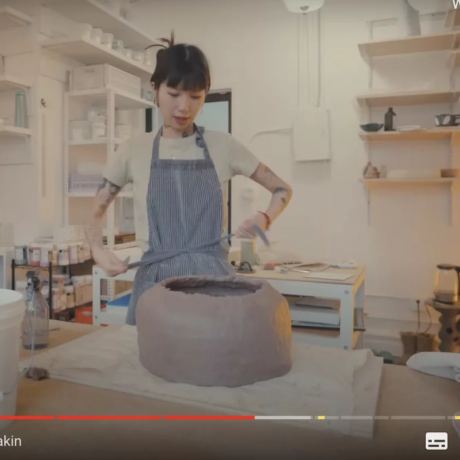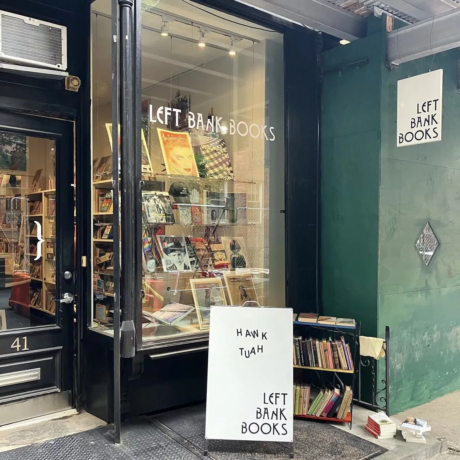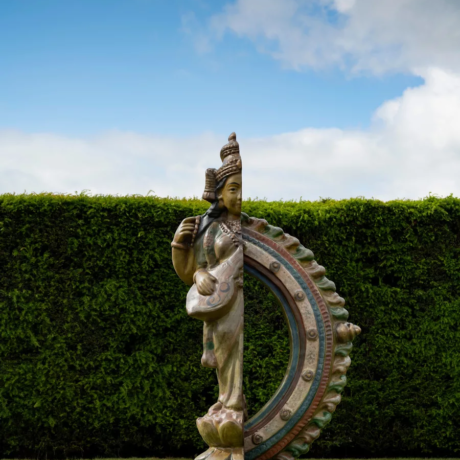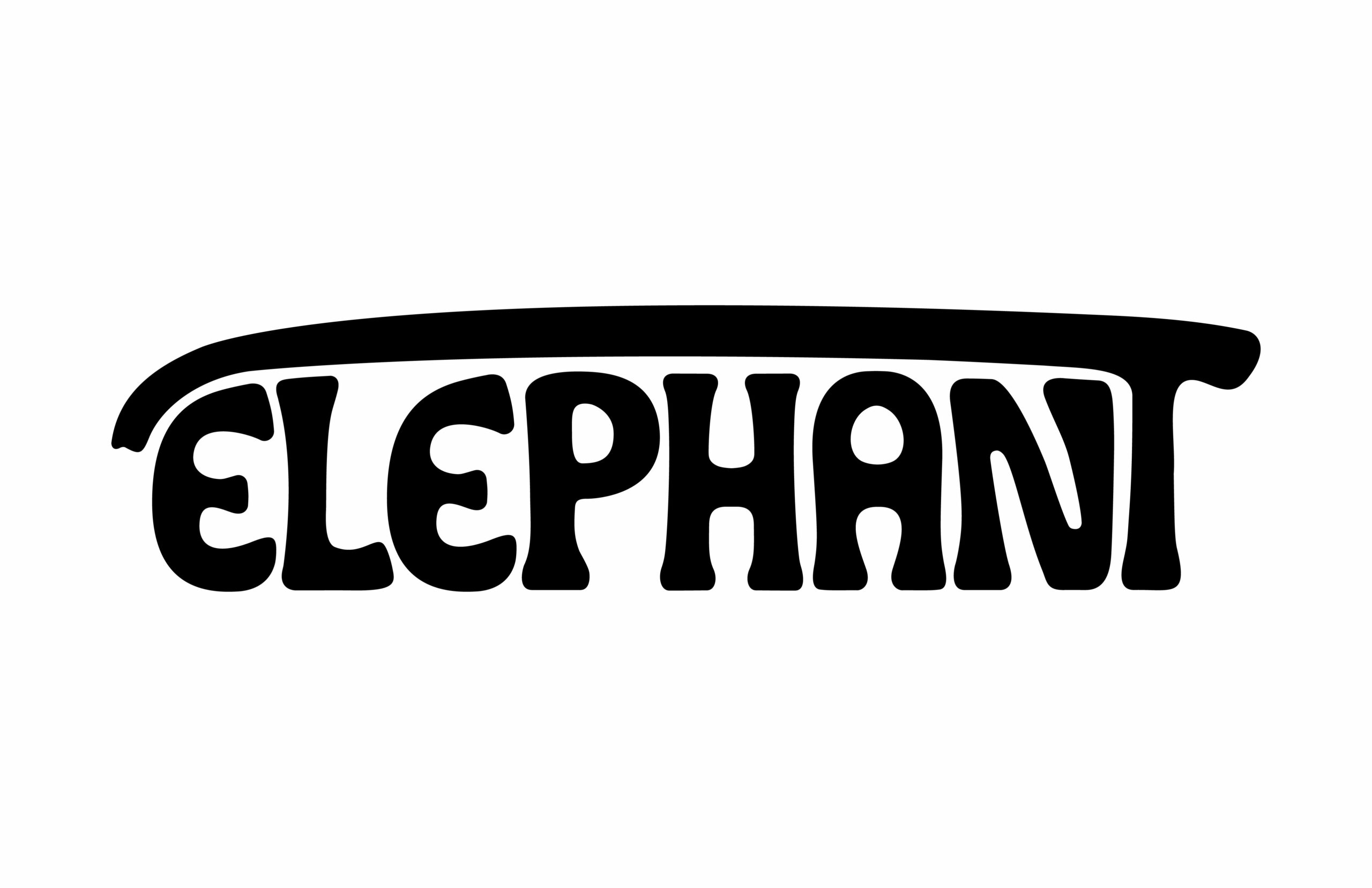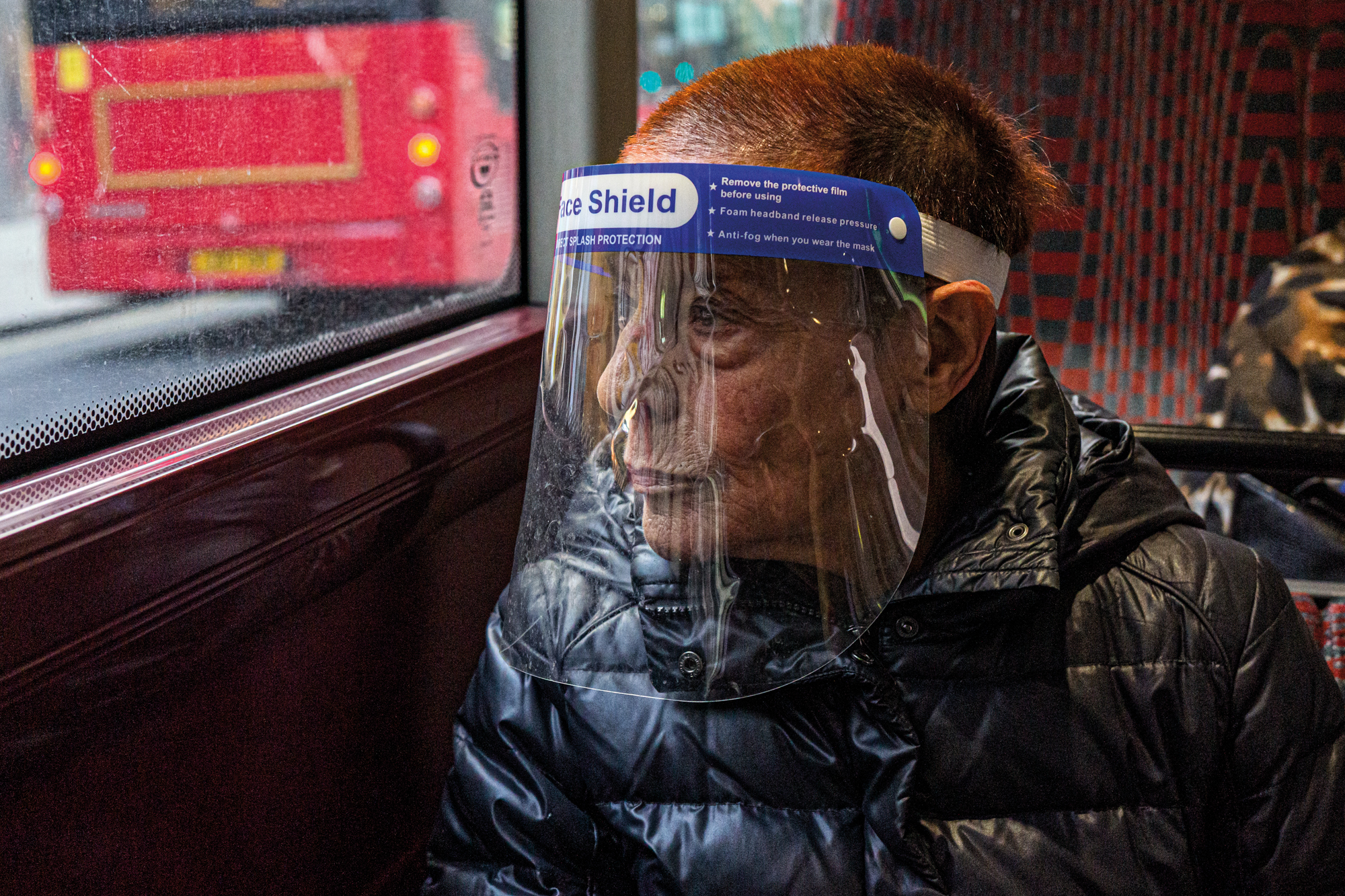
As we approach a full year lived under various states of lockdown in the UK, like many other countries around the world, it feels surreal to reflect on the many transformations that our lives have undergone. Forced to stay at home to prevent the spread of coronavirus, busy streets quickly emptied out. Now-familiar cliff-edge charts quickly showed how transport networks were hit hard. The London Underground saw riders plummet to just three percent of normal rates during the first lockdown in March, recovering slowly to below 40 percent of normal. Bus usage also fell sharply, down by 86 percent before recovering to 55 percent of normal levels in October.
Photographer Dougie Wallace, born in Glasgow and based in London’s East End for over 20 years, has spent the last year documenting the changing moods of the city. Since the start of the Covid-19 pandemic, he has roamed the streets of London with his camera to create a portrait of a place in flux. The resulting images have been brought together in a new book, Bus Response, in which Wallace focuses on the scenes encountered on public transport, and particularly on London’s network of buses. They provide a familiar setting for these personal dramas and moments of solitude to play out before the lens, where couples bicker, one woman applies her make-up and several men doze. The patterned fabric of the seats and the curved windows offer a stage that feels at once universal and distinctly of the city.
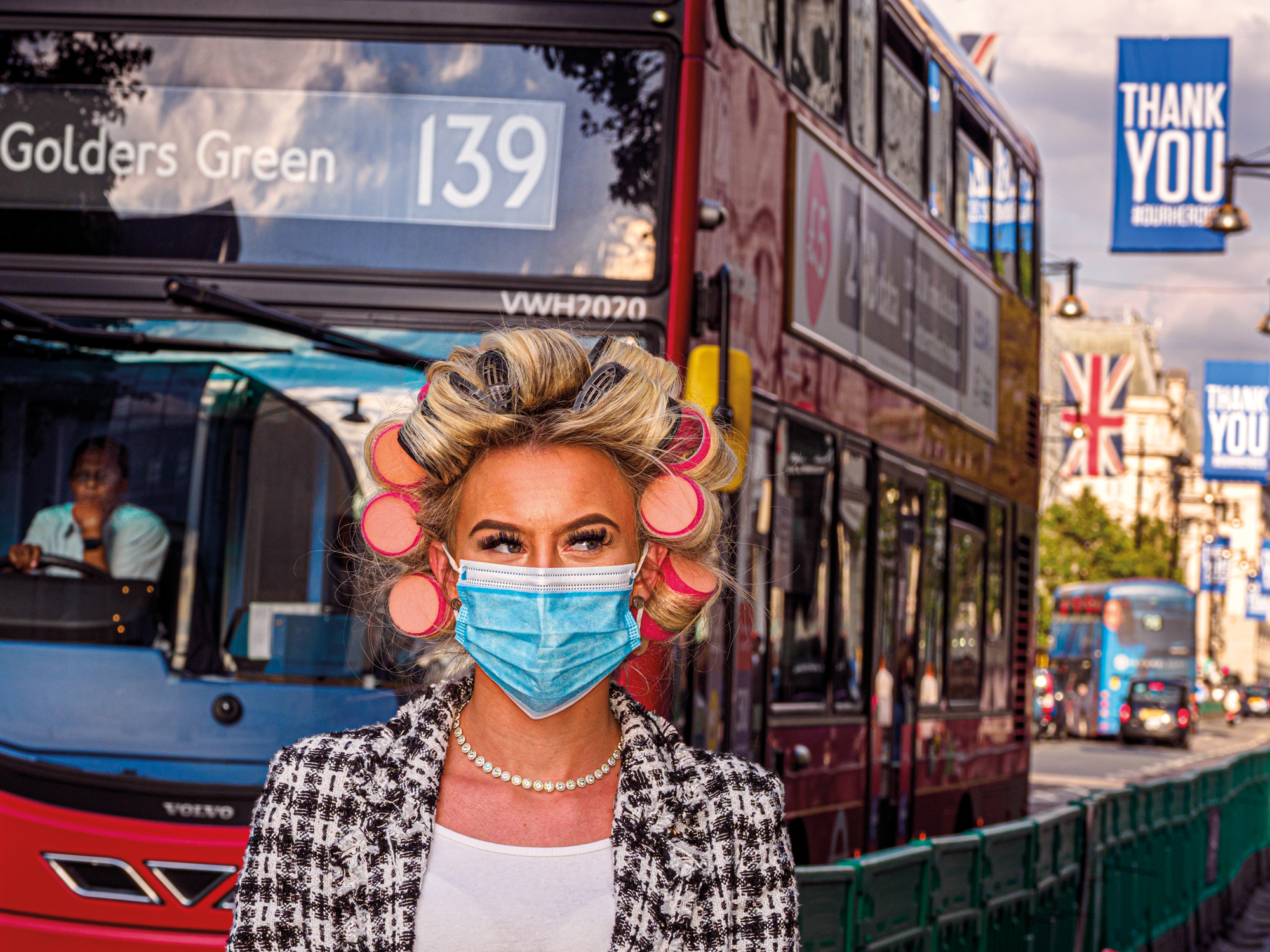
He captures the ebb and flow of the crowds as they disappear and resurge, reflecting the tightening and loosening of lockdown restrictions. His subjects grin and perform for the camera, posing with face mask on in front of a black cab, or else look pensively into the distance as if contemplating the long and lonely months ahead. Personal protective equipment, from a glistening visor to a surgical mask, are visible throughout, a reminder of just how rapidly the “new normal” can emerge within the collective imagination.
“Wallace captures the ebb and flow of the crowds as they disappear and resurge, reflecting the tightening and loosening of lockdown restrictions”
The British government’s public messaging around the pandemic, from the ill-fated “Eat Out to Help Out” campaign to the “#OurHeroes” celebration of NHS workers, gives a distinctive timeline to the images. These messages form a poignant, witty and occasionally heartbreaking backdrop to Wallace’s photographs. His eye for wit and dark humour can be seen in his framing of these signs; one advertisement for the upcoming James Bond movie, No Time to Die, takes on an unfortunate resonance in the context of Wallace’s focus on the pandemic.
The series represents an early example of an emerging genre of artist responses to the pandemic, following a year that has seen most exhibitions and creative projects put on hold. In the face of these limitations, artists have found alternate methods of working that go beyond the usual structures and routines. Just as we have all been forced to reassess our own outlooks and expectations, so have creative practitioners sought to reflect and reevaluate the vastly different set of circumstances that the world has found itself in over the last year. In Wallace’s photographs, that tenacity, collective strength and a resonant glimmer of wit can be clearly seen, even in the most challenging of circumstances.
All images courtesy Dewi Lewis and the artist

